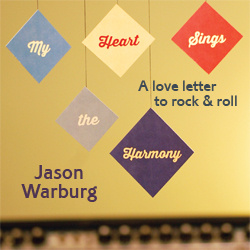Thick As A Brick
Chrysalis Records, 1972
REVIEW BY: Christopher Thelen
ORIGINALLY PUBLISHED: 02/04/1997
What is this, concept album week? Yesterday Bill Ziemer looked at Queensryche's opus Operation: Mindcrime; today, same idea, different group and album.
British group Jethro Tull's first attempt at a concept album (Ian Anderson has repeatedly said that Aqualung was not a concept album), their 1972 effort Thick As A Brick features some of the best performances this group ever did - but they can only maintain that level of expertise for so long.
The concept is that the song is based on a controversial poem by
child prodigy Gerald Bostock (in reality written by Anderson). The
group carried the idea to a whole new level by designing the album
jacket to resemble a 16-page newspaper. (Some may call this a
stroke of genius, others may see it as having way too much free
time. You be the judge.)
The album opens with a folky sound, featuring Anderson's vocals, acoustic guitar and flute, with just a touch of drums, bass and electric guitar. This movement is one of the best-known on the album, having been featured on two of Tull's best-of collections. But just when you think the album will feature the band delving into their folk roots (which they would do about five years later), the album explodes into a jazzy beat that is hypnotizing and frenzied. Martin Barre's guitar work and John Evan's keyboards provide a solid foundation for the band, with bassist Jeffrey Hammond-Hammond and drummer Barriemore Barlow rounding out the troupe.
This is where it becomes difficult to review the album. Because Thick As A Brick is essentially a two-sided song, it is hard to determine criteria for judging the work. (Was that last portion movement seven, eight or twelve?) So, we're left to see if the whole piece flows smoothly and does not become tiring to listen to.
And for the first side, the album succeeds. The different movements are solidly written and performed, and the side quickly passes for the listener. However, the second side sounds more forced than the first, possibly showing that Anderson and crew were running out of ideas near the end. The first warning sign comes when Barlow kicks into a mini-drum solo frenzy, backed by Anderson's flute and percussion. The second side should be approached with caution.
The experience obviously didn't sour Jethro Tull on concept albums; they tried again the following year with A Passion Play - with disastrous results.
Thick As A Brick is not an album that listeners will immediately warm up to. But if you give it several listens, you'll find some of Jethro Tull's best work - as well as some of their weakest.